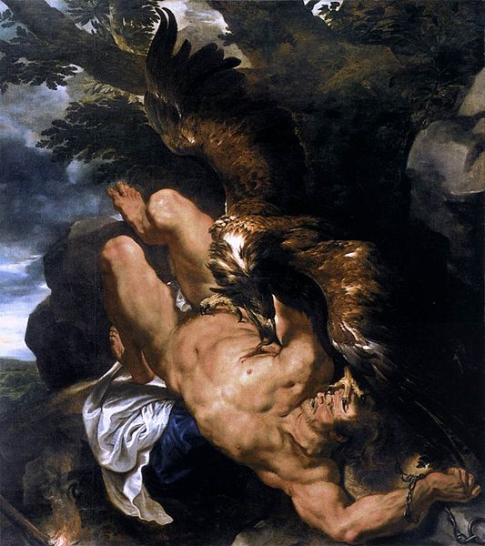 This is one of the most famous paintings to come from the studio of
This is one of the most famous paintings to come from the studio of
In this piece, entitled Prometheus Bound, it was Frans Snyders (1579-1657) who contributed the striking eagle that is so central to the drama of the piece. Snyders had begun to build a reputation as a flower, fruit and still life painter but he truly found his forte when he began painting hunting pieces and pieces depicting animals in combat. It’s little wonder that Rubens hired Snyders to paint animals for him.
Although the eagle is indeed central to this painting, it is the work of Rubens that shows the struggle between man and winged beast as a defenseless Prometheus pays for his transgressions. Prometheus was a powerful figure of Greek mythology. He was one of the Greek Titans – immortal giants who possessed incredible strength and stamina. Prometheus stole fire from the Olympian Gods and gave it to mankind. For this theft, Zeus, the king of the Olympian gods, sentenced Prometheus to eternal torment. The Titan was bound to a rock. Each day his liver was to be eaten by an eagle, the emblem of Zeus. And, each day the liver would regenerate and again be fed upon by the eagle. The myth continues with Prometheus being rescued by Hercules.
In Rubens’ adaptation of the myth, we have a naked Prometheus laying on his back with the eagle standing on his chest and head. The strength of Prometheus is obvious with his large muscular frame but the chain which binds his visible hand explains why he doesn’t fight back against the large brown eagle attacking him. As dawn appears to break in the background, perhaps Rubens has provided a bit of hope to the scene, knowing that Prometheus would one day be relieved of his suffering by Hercules.